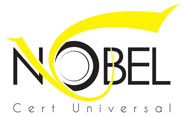ISO 10008:2013 provides guidance for planning, designing, developing, implementing, maintaining and improving an effective and efficient business-to-consumer electronic commerce transaction (B2C ECT) system within an organization.
It is applicable to any organization engaged in, or planning to be engaged in, a business-to-consumer electronic commerce transaction, regardless of size, type and activity.
ISO 10008:2013 is not intended to form part of a consumer contract or to change any rights or obligations provided by applicable statutory and regulatory requirements.
ISO 10008:2013 aims to enable organizations to set up a fair, effective, efficient, transparent and secure B2C ECT system, in order to enhance consumers’ confidence in B2C ECTs and increase the satisfaction of consumers. It is aimed at B2C ECTs concerning consumers as a sub-set of customers.
The guidance given in ISO 10008:2013 can complement an organization’s quality management system.
What are the benefits of BS 10008?
Apply BS 10008 to your electronic information management and you will have better processes in place to deal with copyright, tracking and verification issues. It also covers how to migrate paper records to microform or digital format without compromising quality. This will save you the cost of paper storage, while reducing the amount of paper your use contributes to your organization’s environmental credentials. BS 10008 also outlines ways to authenticate encrypted information and electronic signatures – helping you to align BS 10008 processes with your information security policies. And you’ll have processes in place to make the way you manage information over longer periods more straightforward, including migration during technology upgrades. Plus you’ll be in a better position to manage the risk of losing records – electronic information can be backed-up and protected more effectively than paper records at risk of physical damage.

